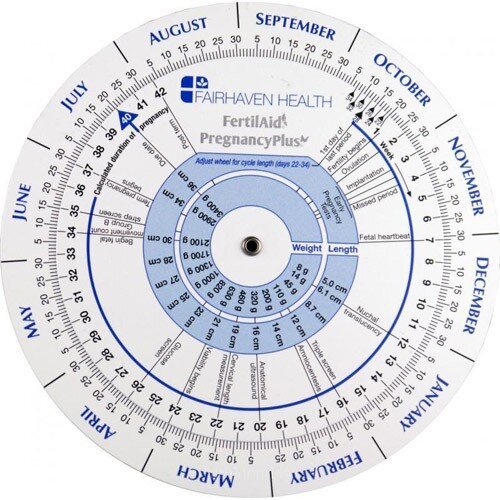If you have ever stayed up all the way to the end of a Pesach Seder, you will have sung the following:
תשעה מי יודע
תשעה אני יודע
תשעה ירחי לידה
Who knows Nine?
I know nine.
Nine are the months of a Pregnancy.
Well I have some news - it ain’t necessarily so. It all begins on today’s page of Talmud:
נדה לח,א
אמר שמואל אין אשה מתעברת ויולדת אלא למאתים ושבעים ואחד יום או למאתים ושבעים ושנים יום או למאתים ושבעים ושלשה
Shmuel says that a woman becomes pregnant and gives birth only after 271 days, which is a full nine months, or after 272 days or after 273 days.
As Rashi explains, nine (thirty day) months is 270 days following intercourse. On day 271, the start of the tenth month of pregnancy, the baby is born. Sometimes though, the egg is not fertilized for 24 or even 48 hours, in which case birth happens on day 272 or 273 after intercourse.
Today’s question is, was Shmuel, the famous second century Babylonian physician-rabbi (and head of the yeshiva of Negardea) actually correct?
“
The length of human gestation varies considerably among healthy pregnancies, even when onset of pregnancy is measured by an accurate marker of ovulation. This variability is greater than suggested by the clinical assignment of a single ‘due date’.”
The length of gestation calculated by the time from the last menstrual period
Generally speaking, studies that examined the length of gestation have estimated gestational age either by the mother’s last menstrual period (LMP) or by ultrasound, both of which are imperfect measures. Based on the first date of the LMP, the end of gestation is 280 days later. But that is not the length of time to which Shmuel referred. He was very precise, and calculated the duration (or received a tradition that was) based on the number of days post conception, Shmuel assumed conception would be on the date of intercourse, or no no more than two days later.
Estimated Due Date (EDD) Calculator. Based on the standard 280 days after the first day of the mother’s last menstrual period.
The actual median length of gestation
In 2013 a study funded by the National Institutes of Health measured things a little differently. It calculated the length of gestation beginning at ovulation or conception in 125 naturally conceived, singleton live births, and determined the exact date of ovulation and implantation by measuring urinary hormone measurements. What they found was very close to Shmuel’s length of gestation. The median time (which is not the average time) from ovulation to birth was 38 weeks and 2 days, or 268 days. That’s a difference of only two days! That’s strong work from Shmuel, who figured it out without the resources of the National Institutes of Health (annual budget, about $32 billion).
Smoothed distribution of length of gestation (accounting for medical interventions that shortened gestation) derived from 125 singleton live births. Solid line: ovulation-based length of gestation. Dashed line: LMP-based length of gestation. From Jukic A.M. et al. Length of human pregnancy and contributors to its natural variation Human Reproduction 2013. 28 (10): 2848–2855.
There is an important caveat, however. The study found that the gestational length varied by 37 days (even after excluding preterm births or pregnancies with medical conditions). This means that the length of human pregnancies can vary naturally by as much as five weeks, and - this is important- that much of this reflects natural variation.
But other factors can influence the length of a pregnancy. For example, older women deliver later on average, with each year of age adding roughly one day to their pregnancy. And women who had themselves been heavier at their own births had longer gestations, with each 100g in the mother's own birth weight corresponding roughly to a one-day longer pregnancy.
The practice of early pious ones
All of which leads us to question the practice of the early pious ones, as they are called by the Talmud. Today’s page of Talmud describes how this group was so convinced by the tradition that gestation was exactly 270 days that they would only have intercourse on a Wednesday, Thursday or Friday. They did this to avoid the risk of the baby being delivered on the Shabbat, and any desecration of it, albeit legally permitted, that might occur to care for the infant or its mother.
Their thinking went like this: 270 days is 38 complete weeks and four days. This meant that delivery would occur four days later in the week than had conception. So if the baby was conceived on a Wednesday, it would be delivered on a Sunday, or a Monday (if fertilization was delayed by 24 hours) or a Tuesday (if fertilization was delayed by 48 hours.) Similarly, a baby conceived on a Thursday could only be born on a Monday, Tuesday or a Wednesday. A baby conceived on a Friday could only be born on a Tuesday, Wednesday or a Thursday. But if the baby was conceived on a Sunday, Monday or Tuesday, they ran the risk of it being born on a Shabbat.
דתניא חסידים הראשונים לא היו משמשין מטותיהן אלא… מרביעי ואילך
As we know, nature does not always cooperate; gestation may on average be about 270 days after conception, but that is an average (or more precisely a median). Some pregnancies are naturally shorter and some longer. Dr Jukic, the lead author of the paper that recalculated the length of human gestation noted that “natural variability may be greater than we have previously thought.” And that is certainly the case for Shmuel and the early pious ones, who calculated the length of gestation with great precision, but alas, not great accuracy.









